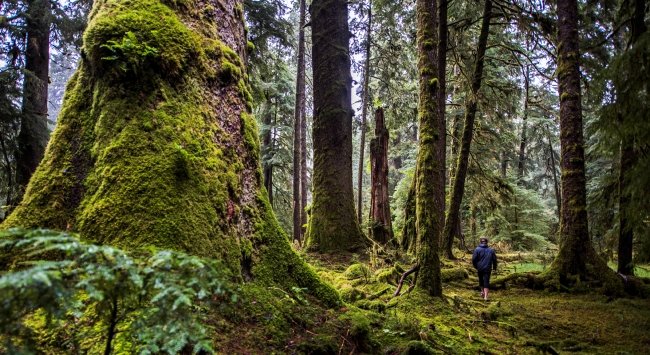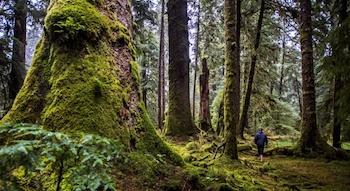Image Caption
By Andrea Smith
Windspeaker Contributor
Google is undertaking a major project in British Columbia this summer. They’ve paired with Destination BC and the Northern BC Tourism Association, and the three will be venturing into charted and somewhat uncharted territory across the province—including into traditional Indigenous territory.
Google has equipped the team with two “Trekkers”—backpacks with 15 cameras each strapped to them that will capture 360 degree panoramic images of anywhere and everywhere they are—and the teams will be mapping, photographing, and collecting stories from locals, all summer long.
“We worked through BC Parks for access to different areas and they would have consulted with different people... Aboriginal Tourism BC was one of the partner’s on this,” said Leah Poulton, Media Manager for Destination BC.
“We have written verbal consent from BC Parks to access the land, and less formal consent to reach out to people in the communities to interview for content, and talk to them about their culture or their heritage and their connection to the land,” she said, of how the team was able to find willing participants in the First Nations communities.
Google has been collecting “Street View” images of Canadian landscapes for a few years, but just loaned the Trekker packs to Destination BC and the Northern BC Tourism Association for this summer. Members of the BC team were specially trained by Google before they could wear the pack, because the packs are so heavy—45 pounds to be exact—and because they are equipped with such advanced technology.
Destination BC’s goal differs slightly from Google’s, in that they are more interested in collecting qualitative information about history, culture, and lived experiences of First Nations people across BC, while Google is simply looking for photographs to use on their Google Map’s site.
“We’re still in the process of figuring it out. We’re in full story capturing mode most of the summer, then in the fall we’ll figure out which stories go where,” she said. “This was the first of 12 trips and we’re visiting possibly at least twice for each territory,” she said.
Poulton was also one of the lucky members of her organization who attended a recent trip into Haida Gwaii territory. While there, she walked amongst ancient art, sacred ceremonial sites, and heritage sites.
She also had the chance to talk with many Haida Gwaii members, including artist Reg Davidson, and Roberta Olson, the owner of Keenawaii’s Kitchen. Poulton was blown away by the kindness and respect shown to her, as well as the openness of the people she met in sharing their culture with the world.
“There was an overwhelming sense of everyone being really excited to share the place they are connected to. Some of the people we talked to had the most amazing stories. There was a kind of consensus across the board that people were telling about their connection to the land and we were coming there to learn and take some of that knowledge away,” she said.
Other areas the team plans to venture into include Mount Edziza and Spatsizi Wilderness Parks, Tumbler Ridge Global Geopark, and the Ancient Forest/ Chun T’oh Wudujut Park. And they’ve already been to Gwaii Hanaas National Park Reserve. Parks Canada just released their footage. First Nations they will be working with along the way include the people of the Tsilhqot’in territory, and in areas around Whistler, including the Squamish, among others.
“Our ultimate goal is to give people a deeper glimpse into some of these remote places and to promote an awareness of some of the experiences people can have in B.C.,” she said.
Reg Davidson had some of his art highlighted when the team visited him at his home in Haida Gwaii in June. Knowing that Haida territory is one of the most beautiful, and still one of the most remote locations in Canada—possibly the world—he used to feel protective over allowing it to be opened to tourism over the internet, he said. Until he looked at it from a different angle.
“I find it’s easier. It used to bother me but now it doesn’t... Because it explains it to people without having them come to Haida Gwaii. They can read about it without coming here,” he said.
Davidson is known for his carvings, and he has some on display in Vancouver’s YVR airport. He even lived in the city for a short while, until his home nation called him back to it. Being born and raised on Haida territory, he’s seen an exponential increase in tourists over the years, but he’s not worried about Google Maps or BC Tourism websites adding to the chaos.
“It’s still too expensive to get here… it won’t be bombarded. We’re on the foot of this town in western Canada. Even a seat sale would be too much,” he said.


